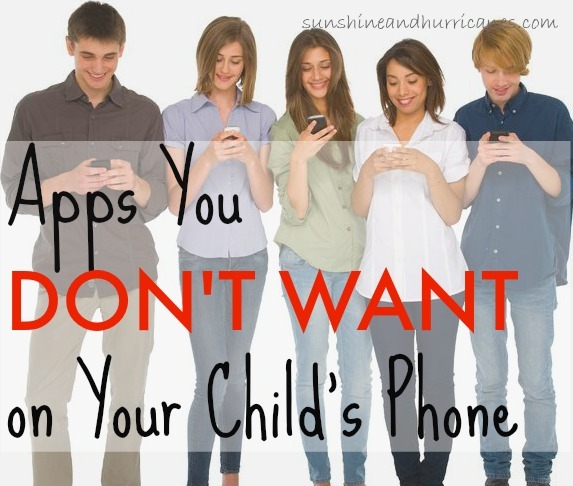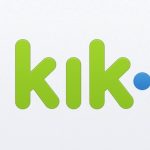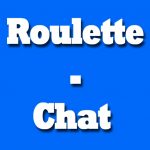One of the best things about the iNACOL 2014 Symposium is the crowd of blended and online learning #SmartLeaders.
Originally posted on Getting Smart Blog
Here’s our list of 101 interesting people we met at #iNACOL14 who you should know.
iNACOL Board of Directors
1. Susan Patrick (@susandpatrick), iNACOL CEO
2. Linda Pittenger, National Center for Innovation in Education, iNACOL chair
3. Amy Anderson, Donnell-Kay Foundation, leading ReSchool Colorado, a greenfield design project
4. Nicholas Donohue (@NickDonohueNMEF), Nellie Mae Education Foundation (@NellieMaeEdFdn), the leader in student-centered learning (attended telephonically)
5. Dr. Gisèle Huff, Jaquelin Hume Foundation, champion of blended learning
6. Jessie Woolley-Wilson (@JessieWW), DreamBox Learning, leader in adaptive K-8 math
7. Julie Young (@JulieYoungEdu), founder of Florida Virtual School
8. Virgel Hammonds, superintendent at Maine RSU2
9. Mickey Revenaugh, co-founder of Connections Education
(and Tom Vander Ark (@tvanderark), CEO, Getting Smart (@Getting_Smart)
Keynoters
10. Gene Wilhoit, National Center for Innovation in Education, laid out a vision for next gen accountability (see paperand our review).
11. Michael Horn (@michaelbhorn), co-founder of the Clayton Christensen Institute, gave an overview of his new book,BLENDED (see our Q&A)
12. Heather Staker (@hstaker), co-author of BLENDED, provided a day long workshop
13. Vicki Phillips (@drvickip), Bill & Melinda Gates Foundation (@GatesFoundation), and she brought a couple dozen colleagues
14. Sal Khan, Khan Academy (@KhanAcademy), great resources, great story (again)
Startups
15. Brian Peddle (@brianpeddle), Motivis, a spinout from Southern New Hampshire University
16. Margaret Roth (@teachingdaisy), COO and Co-Founder, An Estuary, a blended PD community
17. Elliot Sanchez (@ElliotSanchez), CEO & Founder, mSchools, a blended technical assistance provider
18. Jennifer Gibson, Lesson Planet, teachers sharing lessons
19. Karl Rectanus @KarlRectanus, Learn, supporting short cycle EdTech trials
20. Chris Niemeyer, LearnZillion (@LearnZillion), a blended PD community
21. John Danner, co-founder of Rocketship and Zeal, a mobile learning startup
Growing companies you should know:
22. Curt Allen, Agilix (@Agilix), the experts in personalized learning that brought you Brainhoney and Buzz. Mark Tullis, Sean Casey, Jeff Moore and team hosted a great dinner.
23. John Sipe, Curriculum Associates (@CurriculumAssoc), i-Ready adaptive learning K-8 and Ready reading & math. Cynthia Austen and team hosted a great dinner.
24. Sari Factor, Edgenuity (@Edgenuityinc), content and platform powering models like Carpe Diem
25. Greg Levin, Fuel Education (@FuelEducation), powering new blended models
26. Jeff Kwitkowski & Mary Gifford, K12
27. Lisa Frumkes, Rosetta Stone (@RosettaStoneEd), presented Elevate & Empower, how world language teachers are leading the way
28. Keith Oelrich, Learning.com (@learningdotcom) featured Curriculum Foundry
29. Nicole Foster, Scholastic, was demonstrating READ180 (@READ180) and System 44
30. Anthony Kim, Education Elements (@EdElements), a leader in blended learning
31. Sajan George, Matchbook Learning, turning around struggling schools
32. Curtis Linton, School Improvement Network, Edivation PD system
33. Clay Whitehead, Presence Learning (@PresenceLearn) discussed how technology is transforming special ed
34. Judson Aungst (@judson76), Blackboard (@Blackboard)
35. Jenna Schuette Talbot, shared social media best practices and strategies
36. Tracy Immel (@tracy_immel), led the DreamBox Learning presence
Big impact nonprofits:
37. Nigel Nisbet (@nigel_nisbet), MIND Research Institute, unpacked how teachers can implement blended and competency-based learning from the ground up
38. Margaret Angel, CityBridge Foundation, described the NGLC-funded Breakthrough Schools Initiative in Washington, DC
39. Neil Campbell, Policy Director for Personalized and Blended Learning, Foundation for Excellence in Education, supported teams designing blended schools
40. Karla Phillips, State Policy of Competency-Based Learning, Foundation for Excellence in Education, discussed the benefits of Course Access
41. Minda Corso (@MindaC), Foundation for Excellence in Education, shared social media best practices and strategies
42. Mark Schneiderman, Senior Director of Education Policy, SIIA
43. Scott Ellis & Kira Keane (@KeaneKira), The Learning Accelerator, a blended learning assistance provider and grantmaker
44. Thomas Arnett, Research Fellow, Clayton Christensen Institute
45. Deb Pence, Idaho PTECH Network, spreading CTE opportunity statewide
46. Phyllis Lockett and Chris Liang-Vergara (@LiangVergara), LEAP Innovations
47. Carmen Coleman works with Gene Wilhoit and Linda Pittenger at the National Center for Innovation in Education(read about her great work as a superintendent)
48. Chris Sturgis (@Sturgis_Chris), CompetencyWorks, the online competency community sponsored by iNACOL
49. Judy Bauernschmidt, Colorado eLearning Collaborative, was advocating for more and better online learning
50. Shaun Adamec (@shaunadaemec), Nellie Mae Education Foundation (@NellieMaeEdFdn), led a session on the power of framing in shaping debate.
School leaders
51. Diane Tavenner, Jon Dean & Brian Johnson, Summit Public Schools (@SummitPS), the coolest secondary network around (see feature)
52. Brian Blake and the leadership team from Sanborn Regional School District where sharing their experience competency-based
53. Rebecca Midles leads competency-based work at Lindsay Unified School District
54. Gisele Falls, GSWLA, shared findings from Elevate & Empower, how world language teachers are leaders in the shift to personalized learning
55. Pablo Mejia, IDEA Public School, lead a blended learning session
56. Tom Willis, Cornerstone Schools, described their K-12 Detroit blend
57. Liz Arney, Aspire Public Schools, discussed lessons captured in her new book, Go Blended
58. Deborah Gist (@deborahgist), Rhode Island Commissioner of Education
59. Brian Stack (@bstackbu), Principal, Sanborn Regional High School
60. John Rice (@johnricedc), Supporting blended learning with District of Columbia Public Schools
61. Haley Hart, Teacher at Educational Achievement Authority of Michigan
62. Erin Wilcox, Associate Superintendent with Colorado Springs Christian Schools
63. Scott Muri (@ScottMuri), Deputy Superintendent with Fulton County Schools (See Fulton County Schools Innovation Update)
64. Jeremy Vidito (@JeremyVidito), Starr Detroit Academy discussed blended learning in elementary and middle schools,
65. Moss Pike (@mosspike), World Languages Dept. and MS TILT member at Harvard Westlake, shared findings from recently released Elevate and Empower paper–how world language teachers are leading the shift to next gen learning
66. Robyn Bagley, School Director of Career Path High, an early college high school in Kaysville Utah, led a session with two teachers from the school
67. Nicole Tempel Assisi, Thrive Public Schools (@ThrivePS), leads a great new K-8 school in San Diego (see 100 Schools Worth Visiting)
68. Cindy Elsberry, superintendent in NGLC winning Horry County, SC (See Lessons from Horry County)
69. Helen Griffith, e3 Civic High in San Diego (see 100 Schools Worth Visiting)
70. Stephen Harris (@Stephen_H), an Aussie visionary and head of school at North Beaches Christian School, north of Sydney, check out a new vision for school design
71. Jessica Saxon, teacher at St Edmonds School in Wharoonga, Australia was blending in ways that make students smile.
72.Charles Carver, Nexus Lansing (see feature)
73. DeLaina Tonks, Mountain Heights Academy (formerly Open High of Utah)
74. Angela Underwood, Nolan K-8, Education Achievement Authority, Detroit (see feature)
75. Keven Erickson, Kettle Moraine School District (see feature and 100 Schools Worth Visiting)
76. Dawn Smith (@Dawn4Math), RUSD Principal who shared best-practices for creating a student-centered learning environment
Smart Cities
Mary Ryerse (@maryryerse) framed a Smart Cities dialogue and Carri Schneider led a discussion on policy, read the full recap
77. Matt Williams, KnowledgeWorks, led a collective impact discussion
78. Matt Candler (@mcandler), 4.0 Schools, beamed in to discuss the importance of incubating new tools and schools
79. Shawn Rubin (@ShawnCRubin), Highlander Institute (@Highlanderinst), led a discussion on talent development
80. Tim Hilborn, TRECA (@TRECA_Ohio) led a discussion on sustained leadership
Impact investors
81. Bruno Manno, Walton Family Foundation
82. Alex Hernandez (@ThinkSchools), Charter School Growth Fund
83. Scott Benson, Henry Hipps, and Tom Stritikus, Bill & Melinda Gates Foundation
84. Luis de le Fuente and Russ Altenburg, Broad Foundation
States
85. Paul Leather, deputy commissioner in New Hampshire, described efforts to improve teacher prep in a state leading on competency-based learning
86. Christina Jean, Colorado Department of Education, Innovation & Blended Learning Specialist
87. Jamie Fitzpatrick, President of Michigan Virtual University, was part of a panel on course access
88. Dave Lefkowith,, talked about the Louisiana Supplemental Course Academy
Competency-based teacher prep & development
89. Bridget Foster, Digital Promise, described the framework for Preparing Teachers for Deeper Learning
90. Beth Rabbitt (@BethRabbitt), The Learning Accelerator, described their talent development portfolio including Highlander Institute, Relay GSE,
91. David Haglund, deputy superintendent in Santa Ana described blended PD in his district
Online/blended learning leaders
92. John Watson, led an informative discussion on Keeping Pace with K-12 Digital Learning
93. Mark Lonergan, MIND Research Institute, discussed blended learning in elementary and middle schools
94. Jeff Kerscher (@kerscherjp), shared key ELA blended learning strategies that will enable practical implementation
95. Stacy Hawthorne (@StacyHaw), Hawthorne Education, #iNACOL14 Twitter superstar
96. Robanne Stading (@tchlrn_ak), Alaska based blended special ed instructor
97. Eric Nentrup (@ericnentrup), Indy based ELA Instructor/Ed Tech Coach
98. Aaron Kaswell, teacher, MS88 in Queens, a NewClassrooms site
99. Kia Bordner (#RiledUpTales), provided the student voice with fellow online and blended students
100.Jason Ellingson, Collins-Maxwell superintendent and Iowa ASCD president. Jason Ellingson
101.Tom Ryan, eLearn Institute
Thanks to Jonathan Oglesby (@oglesbyj), Allison Powell, Linda Wood, and the whole iNACOL (@nacol) team that made #iNACOL14 possible.


















 Flexible blended learning models allow teachers in Milpitas School District in California to spend time with small groups of students while others learn on computers. / Photo courtesy of Milpitas School District
Flexible blended learning models allow teachers in Milpitas School District in California to spend time with small groups of students while others learn on computers. / Photo courtesy of Milpitas School District
